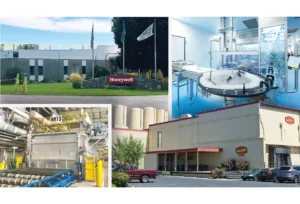
Home » Avista plans big upgrade at Noxon dam
Avista plans big upgrade at Noxon dam
Four generators will get new turbine runners in $35 million project
February 26, 1997
Avista Utilities will start work in July on the first of four generator upgrades at its Noxon Rapids Dam, located on the Clark Fork River in Montana, that are expected to cost a total of $35 million.
Each of the four generators, which were installed in 1958 and 1959 when the dam was built, will have a rated capacity to produce 5 percent to 6 percent more electricity after the upgrades, says John Hamill, Avistas manager of hydro engineering, generation, and production. The generators now have capacity to produce 105 megawatts of power, and the upgraded units will have capacity to generate 112 megawatts. A megawatt of electricity will serve 750 homes.
The company will upgrade one generator a year in the project, and is waiting until the third week of July to start work on the first generator, Unit No. 1, because the peak time for hydropower generation will be over by then, Hamill says. Periods of high runoffsuch as noware optimum for hydropower production, he says.
These machines typically make their revenue at this time of year when theres plenty of water, Hamill says.
Avista already has completed the rewinding of and other major maintenance work on a fifth generator in a $9 million project that it finished in April, Hamill says. That generator, Unit No. 5, was installed in the late 1970s and has the capacity to generate 130 megawatts of power, which was not increased in the recent project, he says. When a generator is rewound, copper coils are replaced inside the wall of the stator, a circular opening in which a rotor, or large magnet, spins to produce electricity.
The upgrade of Unit No. 1, projected to cost $14 million, includes design costs that apply to all four generator upgrades, Hamill says. In that first project, Avista is rewinding the generator, is replacing the iron that holds the copper coils in the stator, and is replacing the enormous turbine runner, which has blades much like those on the propeller of a boat motor. As falling water plunges against the blades, the turbine spins at up to 100 revolutions per minute, creating mechanical energy. The whirring runner spins a shaft that turns the rotor inside the stator, converting the mechanical energy into electrical energy.
Because the generator will produce more energy after the upgrade, Avista needs to rewind and upgrade the stator to handle the added power, increasing the cost of the first upgrade, Hamill says. Units No. 2, 3, and 4 were rewound earlier, and much of the work in their upgrades, which are projected to cost about $7 million apiece, involves replacing their turbine runners.
The company expects to complete the upgrade of Unit No. 1 next April and to launch the three subsequent upgrades in 2009, 2010, and 2011, handling one at a time.
Voith Siemens Hydro Power Corp., of York, Pa., is supplying the copper coils and rewinding the generator in Unit No. 1 and also is replacing steel laminations that are a part of the rotor, Hamill says.
Our crews will do the disassembly of the runner, shaft, and rotor and the installation and assembly of the new equipment, Hamill says. At times, the company will have two shifts a day of 10 to 14 of its journeymen mechanics and electricians working on the project.
Tolerances will be tight. The giant shaft that connects the turbine runner and the rotor must be set in place so precisely that its top and bottom ends are within .004 of an inch of being perfectly plumb, Hamill says. Such an infinitesimal variation is about equivalent to the width of two pieces of paper, he says. The gap between the edges of the turbine runner blades and rings at the top and bottom of where the blades turn will be less than 1/16 of an inch.
As the four original generators are upgraded, they will be fully disassembled for the first time since they were installed five decades ago, although in the intervening years they have been rewound and some maintenance work has been done on them, such as repairing pitting in the edges of the runner blades caused by the collapse of small vapor bubbles in the water as it rushes past, Hamill says. To remove the old runner, shaft, and rotor and put the new components in place, Avistas crews will use a gantry crane capable of lifting 350 tons, or 700,000 pounds, of weight at a time.
It took Toshiba International Corp., of Yokohama, Japan, two years to manufacture the first of the 100 percent stainless steel runners, and it also will manufacture the other three, Hamill says.
Noxon Rapids increased capacity to generate hydropower will earn federal tax credits for Avista and also will help it meet state of Washington requirements for adding renewable generating resources, Hamill says.
He says the company will seek to include its investment in the generator upgrades in its rate base, which is part of the basis for the electricity rates its customers pay.
Contact Richard Ripley at (509) 344-1261 or via e-mail at [email protected].
Latest News
Related Articles


_web.webp?t=1764835652)
